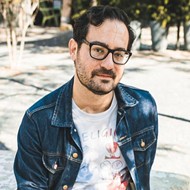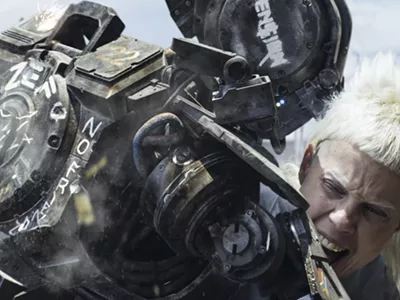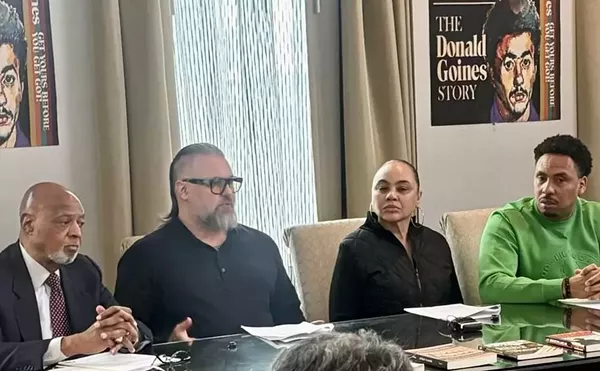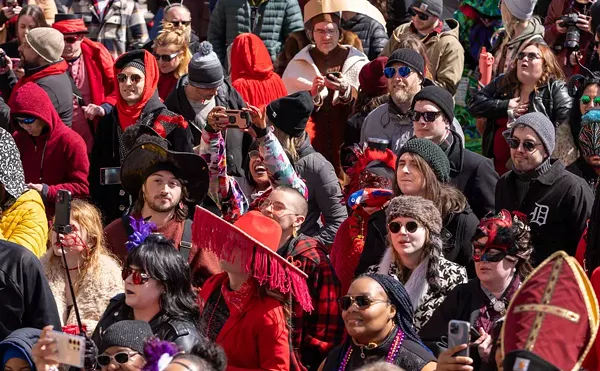Mark Rosenthal is understandably excited for the DIA's anticipated Diego Rivera and Frida Kahlo in Detroit to open. The exhibition's adjunct curator, he's has spent the past two years wrangling the 70 works of art that that will help follow the careers of two of the world's most famous artists as they intersected between April 1932 and March 1933 here in Detroit. The exhibition offers perhaps the most comprehensive look at both artists to date (even though the DIA was unable to obtain an iconic and provocative Kahlo painting currently owned by Madonna).
The cause for their arrival in Detroit was, of course, the creation of Rivera's "Detroit Industry" murals — funded by Edsel Ford, and commissioned by the DIA under director Wilhelm Valentiner. At the time, Rivera was one of the most famous living artists in the world, best known for his grand, nationalistic murals about the history of Mexico. Valentiner was in something of competition with Nelson Rockefeller in New York, both vying to be the first to get Rivera murals (the DIA won). But while Rivera was the star, Kahlo was just starting to bloom as an artist as well.
"What I didn't quite realize when I got started was how incredibly pivotal of a year it had been in both artists' careers," Rosenthal says. For Rivera, the "Detroit Industry" murals were something of a departure from his typical subject matter. "As the possibility became apparent that he was going to get to paint in Detroit, (Rivera) became totally immersed in the idea of a different theme than what he had been painting," Rosenthal says, by showing workers in factories as opposed to workers in fields. "But even bigger would be this kind of cosmic vision, as it were, of a merger of the two great powers of the Western hemisphere — American Industrialization and Mexican might, when it came to raw materials and a spiritual view."
Kahlo, though, was pretty much unknown. "At the time, the Free Press had an article about Mrs. Rivera being 'a dabbler,'" Rosenthal says. "But (Kahlo) was no shrinking violet whatsoever, emotionally or artistically. When they arrived at the train station someone finally got around to asking Mrs. Rivera, 'What do you do?' And she said, 'I'm the greatest painter in the world.' This person who had no reputation and if you actually looked into her work it wouldn't look all that exciting, in fact."
Rivera was a workaholic, spending the first three months in Detroit doing hundreds of observational drawings from the auto factories. Kahlo, meanwhile, was largely unimpressed by her time in Detroit, passing the time watching movies — "she loved gory movies, and loved Abbott and Costello-type movies," Rosenthal says.
In addition to feeling isolated and alienated, Kahlo's mother died back in Mexico during her year in Detroit, and she suffered a miscarriage at Henry Ford Hospital. But with Rivera's encouragement, Kahlo was able to channel these experiences into groundbreaking and surreal, yet autobiographical paintings.
Rivera's completed murals, with blasphemous and Marxist overtones, caused a well-publicized bit of controversy once completed — which the DIA benefited from greatly. "Of course, out of controversy, comes more attendance," says Rosenthal. "And one wonders whether Valentiner didn't realize this at a certain point." (Rivera would create even more controversy with his Rockefeller Center murals, but those would later be destroyed.)
The DIA's attendance went way up once the murals were completed, and the city increased the budget of the museum. "Valentiner said that he thought a mural by Rivera would make the museum famous throughout the world, and that this could arguably become the most famous work in the museum," Rosenthal says.
"One of my favorite ways of talking about the Rivera Court is to say it's a secular Sistine ceiling," Rosenthal says. "It's totally about workers, it's totally about something altogether different."
But the show goes beyond just the murals — that's just the framing device for a much bigger story about the two artists. "It's not simply putting them side by side — it's showing their inner relationship as artists," he says. "I don't think any exhibition has ever done that."
Diego Rivera and Frida Kahlo in Detroit opens March 15 and runs through July 12 at the Detroit Institute of Arts; 313-833-7900; tickets $14-$19.







